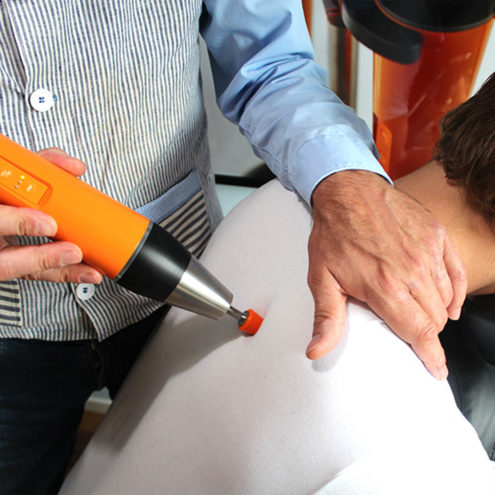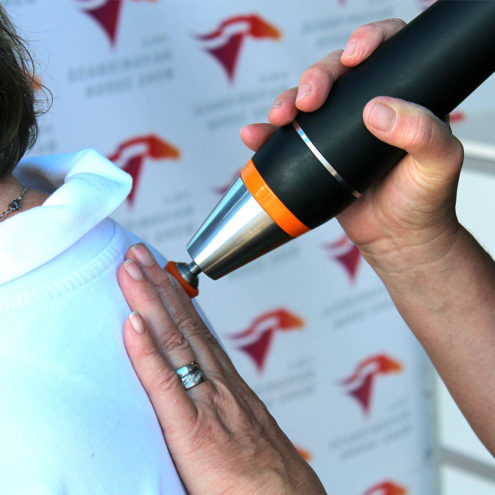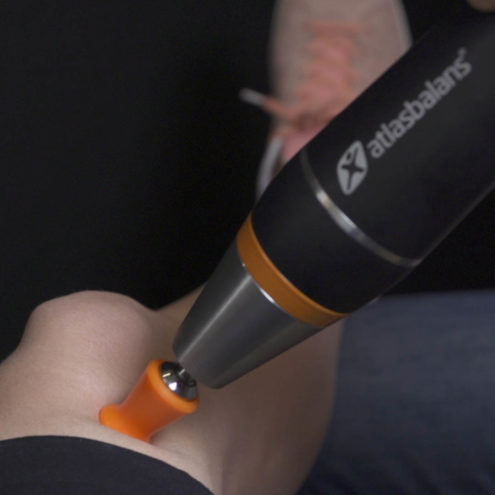Forearm exercises – Build strength and endurance in your forearms

The forearms are an important but often overlooked muscle group in training. Strong forearms are essential for grip strength, endurance and stability in many activities, from strength training and climbing to everyday tasks such as carrying heavy objects or typing on a keyboard.
By training your forearms, you can improve your general strength, reduce the risk of injury and optimize your performance in other forms of exercise. In this guide, we look at the benefits of exercising your forearms, effective exercises and how to avoid common mistakes. We also tell you how Fascia clinics can help you improve your grip strength and mobility through fascia treatment and personalized advice.
The benefits of exercising forearms
Including specific forearm exercises in your exercise routine can provide several important benefits:
1. improved grip strength
Stronger forearms make it easier to hold and lift weights, improving performance in exercises such as deadlifts, pull-ups and kettlebell training.
A strong grip is essential for sports like climbing, martial arts and gymnastics.
2. Increased resilience and injury prevention
Strong forearms and wrists can reduce the risk of overuse injuries, carpal tunnel syndrome and tendonitis.
Increased forearm endurance reduces the risk of losing your grip during heavy lifting or prolonged activities.
3. support for the whole upper body
The forearms are a link between your hands and the rest of your body – a weak link can limit your strength in exercises such as bench press, push-ups and rowing exercises.
Basic exercises for forearms
To effectively train your forearms, you should include both wrist exercises and grip strength exercises. Here are some of the best basic exercises:
1. Wrist Curls (Wrist Curls)
Muscles that are activated: The forearm flexors (front of the forearm).
Implementation:
- Hold a dumbbell with your palm facing up.
- Bend your wrist upwards and then slowly lower back down.
- Repeat 10-15 times per arm.
2. Reverse wrist curls (Reverse Wrist Curls)
Muscles that are activated: The extensor muscles of the forearm (back of the forearm).
Implementation:
- Hold a dumbbell palm down.
- Lift the weight by bending your wrist backwards and then slowly lower back.
- Repeat 10-15 times per arm.
3. Grip exercises (Handgrip Strengthening)
Muscles that are activated: The entire forearm and the flexor muscles of the fingers.
Implementation:
- Use a handgrip trainer or a grip ball.
- Squeeze as hard as you can and hold for a few seconds.
- Release slowly and repeat 10-15 times.
Forearm training for different goals
1. to build strength
Use heavier weights and fewer repetitions (6-10 reps).
Focus on wrist curls and grip exercises with heavy weights.
2. to increase endurance
Train with lighter weights and more repetitions (15-20 reps).
Add static grip training, where you hold weights for longer periods of time.
3. to improve grip strength
Use equipment such as barrel grips, grip trainers and hanging exercises.
Combining static and dynamic training, for example hang from a pull-up bar for as long as you can.
Common mistakes in forearm training
1. using weights that are too heavy
Overloading can cause injuries to wrists and tendons.
Solution: Start with light weights and increase gradually.
2. Incorrect technology
Swinging the weight instead of working in a controlled manner reduces the training effect.
Solution: Use slow and controlled movement.
3. too little variety
Training only grip strength but ignoring mobility can lead to stiffness and injury.
Solution: Combine strength, endurance and mobility training.
Grip strength and its importance
Grip strength is essential for both exercise and everyday activities. Some effective exercises to strengthen your grip:
Farmer’s Walk: Walk a distance with heavy dumbbells in your hands.
Hang on to the bar: Hold onto a pull-up bar for as long as possible.
Fat Grip Training: Use a thicker grip on dumbbells and barbells to increase activation in the forearms.
Read more about training for grip strength in our article.
Mobility and stretching for forearms
Stretching can reduce stiffness and improve recovery after exercise.
1. Wrist stretch against wall
Place your palm against a wall with your fingers pointing downwards.
Gently squeeze to stretch the forearm.
2. finger stretch
Grasp your fingers and gently pull them backwards to stretch the tendons in your forearm.
Injury prevention exercises for forearms
To avoid overuse injuries, you should include injury prevention exercises:
Eccentric wrist curls – Lower the weight slowly to strengthen tendons.
Rubber band exercise for fingers – Spread your fingers out against resistance to strengthen the extensors.
Tips for creating a sustainable forearm exercise routine
Exercise regularlybut give your forearms sufficient rest.
Vary the exercises by using different tools and techniques.
Customize your training to your needs – for example, more endurance training if you climb, or more strength training if you lift weights.
How Fascia Clinics can help you strengthen and rehabilitate your forearms
At Fascia Clinics, we offer treatment and rehabilitation for forearms and grip strength. Our fascia treatments can help you to:
Reduce stiffness and pain in forearms and wrists.
Improve mobility and strength by optimizing fascia and muscles.
Preventing future injuries by identifying and correcting biomechanical imbalances
Do you want to improve your forearm strength and avoid injury? Visit fasciaklinikerna.se fasciaklinikerna.se and book a consultation today!
 Search
Search
































